Clean Air Day 2025 - what do you breathe every day?
You too have an impact on air quality. See the statistics and find out what you can do.


Learn more about our editorial process
.

Learn more about our editorial process
.

Learn more about our editorial process
.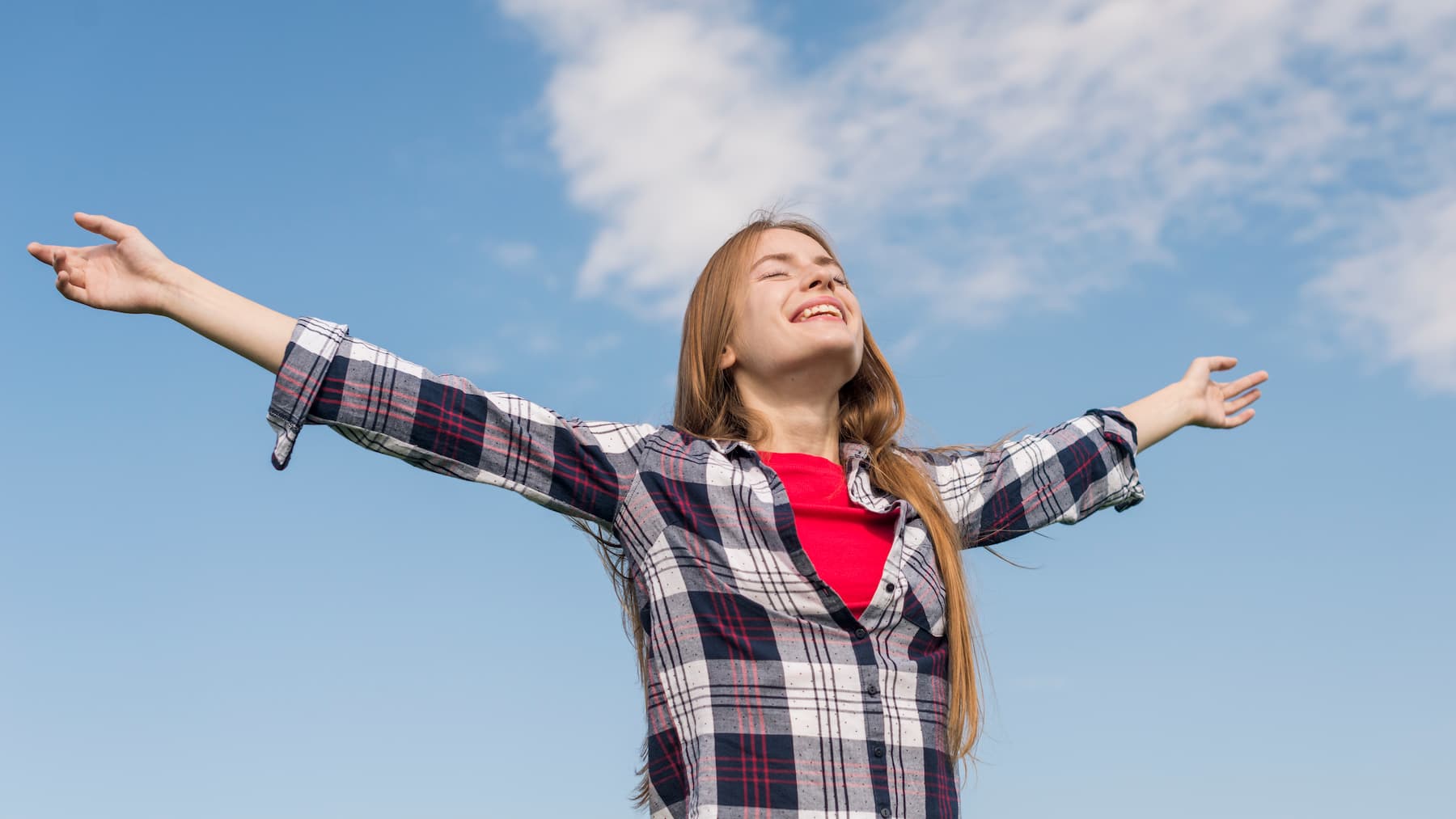
Why you can trust us
Articles on Natu.Care are written based on scientific research, data from government websites and other reliable sources. The texts are written in cooperation with doctors, nutritionists and other health and beauty experts. Articles are reviewed before publication and during significant updates.
.Learn more about our editorial process
.Information about advertisements
Content on Natu.Care may contain links to products from the sale of which we may receive a commission. When creating content, we adhere to high editorial standards and take care to be objective about the products discussed. The presence of affiliate links is not dictated by our partners, and we select the products we review ourselves completely independently.
.Learn more about our terms and Conditions
.Ah, autumn and winter... It will soon be white outside. But it won't be a snowy white, but rather a kind of sino-brown. And it won't be falling from the sky at all, but will be floating in it.
For smog, there is no escaping it. It insidiously invades our homes and... lungs, destroying our health. What's worse is that we are responsible for the enormity of this pollution ourselves. The small, everyday choices we make have an impact on air quality.
From this article you will learn:
- Which air pollutants are the most dangerous.
- How smog forms.
- How smog is formed. .
- What are the statistics on air quality in Poland and around the world.
- Who generates the most air pollution.
- What are the statistics on air quality?
- Who generates the most pollution. .
- What can be done to minimise the dangerous effects of smog. .
See also:
- World Food Day
- World No Smoking Day
- Lung health after a pandemic
- Great Bee Day
- Bone Marrow Donor Day
- Fish Day
- Day of Blood Donation
- National Kindergarten Day
- Hug Day
- Of singles on Valentine's Day
When is Clean Air Day?
.Clean air is so important that as many as two days a year are dedicated to it. Clean Air Day is celebrated on 14 November. However, at the initiative of the United Nations, International Clean Air Day was also established, which falls on 7 September.
.What we breathe every day...
.Breathing is a symbol of life for many - no wonder. The oxygen circulating in your veins is the basis of all life processes taking place in the body. But can we put an equal sign between oxygen and air? No. Oxygen is not even its main component.
Composition of air
.Air (the pure kind) is made up of four main compounds:
.- nitrogen (78%), .
- oxygen (20.9%), .
- argon (0.93%), .
- carbon dioxide (0.03%), .
If you have just calculated this, you already know that adding up the percentages will give not 100%, but 99.86%. The remaining hundredths of a percent is a mixture of other noble gasesand.
And yes, carbon dioxide occurs naturally in the composition of the air. We exhale it into the atmosphere every day. It is also produced by decaying plants, for example. However, as you can see, its contribution to the composition of clean air should be minimal.
It is not a problem.
The problem arises when there is too much carbon dioxide in the air. Then, from an ordinary, "residual" component of the air, this compound becomes one of the greenhouse gases. And these are responsible, among other things, for climate change and related disasters and weather anomaliesand. Unfortunately, carbon dioxide is not the only problem.
The most dangerous air pollutants
.Every day we emit many compounds into the atmosphere that pollute the air. Some of the most dangerous (and emitted in the highest quantities) includeand:
- suspended particulate matter, .
- nitrogen oxide, .
- carbon monoxide, .
- sulfur dioxide,
- sulfur dioxide.
Suspended particulate matter
.Suspended particulates are microscopic particles of minerals and metals that have entered the air and then combined with water. They are classified by size, and measured in micrometres. If you have ever checked your air quality on an app or dedicated website, you will no doubt have come across the designation PM2.5 and PM10. What do these mean?
PM is an acronym for
The smaller the dust particles, the greater the danger they pose to your health. This is because smaller particles find it easier to overcome the natural protective barriers in the respiratory tract and enter the bloodstream .
Particulate matter can contain, among other things, poisonous dioxins, heavy metals and other compounds from, for example, the burning of fossil fuels. When they enter the body, they can build up in the body and consequently lead to the development of cancer, lung disease, increased asthma and allergy symptoms, or recurrent respiratory infections .
Nitric oxide
.Nitric oxide is a representative of a group of notorious free radicals that contribute to oxidative stress in the body. As if that wasn't enough, nitric oxide oxidises on contact with oxygen to form nitrogen dioxideand.
Breathing nitrogen dioxide puts you at risk of damaging the immune cells populating your lungs. This can result in more frequent upper respiratory illness and increased asthma symptoms .
Carbon monoxide
.Carbon monoxide, or Chad, is a highly poisonous compound that reduces the amount of oxygen in the blood and can cause cardiovascular disease. It is formed by incomplete combustion of fuels, such as coal, wood, oil or petrol. When there is a lack of oxygen in the combustion process, the reaction does not fully take place (the fuel does not burn) and instead of carbon dioxide, it is Chadand.
.Silent killer
.Cad has no smell and is colourless. It has gained a reputation as a silent killer, killing more than 100 people in Poland each year. Chad poisoning most often occurs due to broken and leaking heating installations (e.g. gas cookers) and chimney flues. It is possible to protect oneself from this insidious compound by purchasing carbon monoxide detectors - they cost from a few tens of zlotys and can save lives.
Of course, you are not at risk of such dire consequences from being outdoors, even if you live in an extremely polluted city.
.Sulphur dioxide
.Sulphur dioxide is a gas that can damage the epithelium lining the nose, throat and lungs. In addition, it can cause narrowing of the airways. It increases the risk of infection and inflammation. It is particularly dangerous for asthmatics and people with cardiovascular conditionsand.
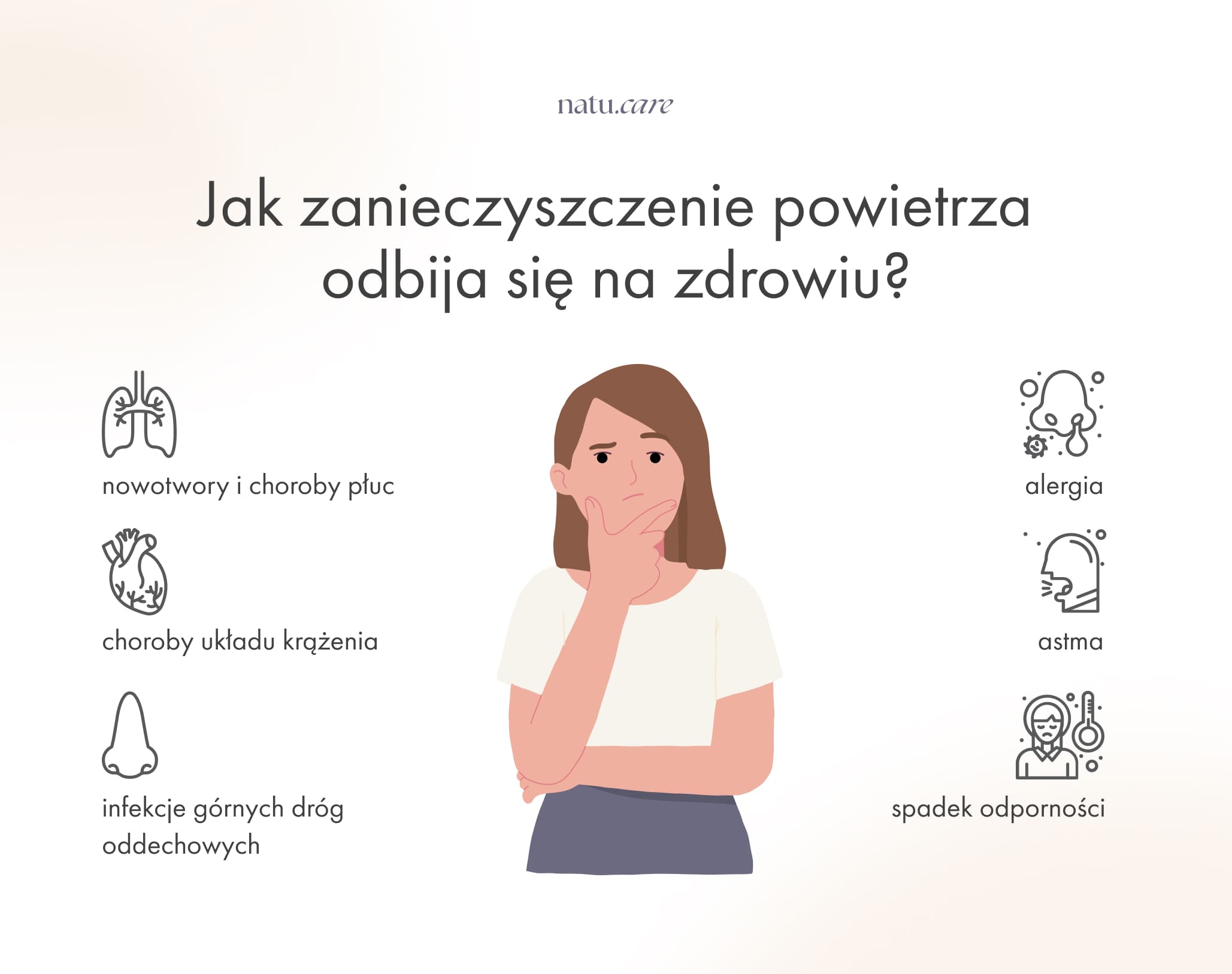
How is smog formed?
.The poisonous compounds described above (and a few other 'nice-to-haves'), mixed together, can create smog. However, the pollutants in the air alone are not enough for a neighbourhood to become covered in a grey-yellow, suffocating vapour.
For smog to form, three conditions must be metand:
.- lots of pollutants in the air (with particulate matter predominating), .
- high humidity (smog is most often formed together with fog), .
- windless weather persisting for a long period of time, .
It is because of this last point that residents of coastal cities, where gusty winds blow in from the sea, can enjoy the best air quality in Poland. Simply put - smog needs to be ventilated.
Today, therefore, one of the greatest urban planning challenges is to provide air corridors in cities that would allow air masses to move naturally. It is a question of planning urban development in such a way and incorporating green areas that would allow for the free exchange of air.
Natu.Care Collagen Premium 5000 mg, mango & passion fruit

- Collagen content: 5000 mg marine collagen hydrolysate
- Additional active ingredients: vitamin C, low molecular weight hyaluronic acid (and L-theanine and coenzyme Q10 in cocoa flavoured collagen or vitamin A and vitamin E in mango–passion fruit flavoured collagen)
- Form: powder sachets
- Dose: 1 sachet per day
- Sufficient for: 30 days
Product description
Fish collagen from the Natu.Care brand in a dose of 5000 mg, based on certified ingredients of the best quality. Regular supplementation will positively influence the appearance of the skinóry, hairów and nails – they will be rebuilt and strengthened from the inside.
In addition to collagen, which is valuable for health and beauty, it also offers other active ingredients that help to maintain a youthful complexion, shiny hair and strong nails.
The formula contains a sufficient portion of the active ingredient to positively affect joints, the musculoskeletal system and immunity.
Natu.Care Premium Collagen is available in two flavours – Cacao Bloom and Rise&Shine. Both formulas are based on the following active ingredients: marine collagen hydrolysate, wild roseóbud extract and hyaluronic acid.
Additionally, Cacao Bloom contains natural L-theanine, coenzyme Q10 and defatted Dutch cacao. Rise&Shine instead contains vitamin E and vitamin A.
These are the best collagens in the world.
These best fish collagens on the market also rós taste – Cacao Bloom is a treat for chocolate lovers. Rise&Shine will appeal to those whoólike the refreshing taste of mangoófruit and passion fruit.
Pros and cons
Pros:
- Vitamin C supports the body's collagen production, enhancing its effectiveness.
- An effective dose of hyaluronic acid, which additionally supports skin hydration and joint health.
- Fish collagen absorbs 50% better. Additionally, the manufacturer specifies the fish species it is sourced from (Atlantic cod).
- The composition has been tested by the independent and accredited J.S. Hamilton laboratory.
- MSC (Marine Stewardship Council) quality certification, which confirms that the collagen source supports sustainable fishing practices.
Cons:
- None.
Additional information
Natu.Care's fish collagen receives praise for its delicious taste. You won't find the fishy aftertaste that often comes through in other collagens. Plus, you have two tasty flavors to choose from: cocoa and mango-passionfruit.
Active ingredients like coenzyme Q10, hyaluronic acid, and natural L-theanine provide anti-inflammatory and antioxidant benefits while slowing down aging processes.
User review
Super, after about 6 weeks of use, the skin on my face became noticeably firmer. Wonderful taste.
Ania ZalewskaNatu.Care customer
Natu.Care Premium collagen 10 000 mg, mango-maracuja

- Collagen content: 10,000 mg marine collagen hydrolysate
- Additional active ingredients: vitamin C, low molecular weight hyaluronic acid (and L-theanine and coenzyme Q10 in cocoa flavoured collagen or vitamin A and vitamin E in mango–passion fruit flavoured collagen)
- Form: powder sachets
- Dose: 1 sachet per day
- Sufficient for: 30 days
Product description
One of the strongest collagens on the market, whichós provides as much as 10,000 mg in a daily serving. This allows the formula to effectively support the condition of the skin, hair and nails.
With this supplement, you will support your beauty, which will allow you to visually stop the ageing process and feel a second youth!
Natu.Care Collagen Premium 10 000 mg comes in two flavours – cherry and mango-maracuja. Both formulas have the same product backbone – collagen, hyaluronic acid and vitamin C.
In the cherry version you additionally find glucosamine, chondroitin and Indian frankincense resin extract. Mango-maracuja, on the other hand, contains vitamin E and vitamin A.
Pros and cons
Pros:
- Tested collagen formula – SeaGarden, whose effects have been confirmed in clinical studies.
- Effective dose of hyaluronic acid, additionally moisturizing the skin and positively impacting joint health.
- Vitamin C supports the body’s natural collagen production.
- The composition has been tested by the independent and accredited J.S. Hamilton laboratory.
- The product has an MSC (Marine Stewardship Council) quality certification – the collagen source supports sustainable fishing practices.
Cons:
- None.
Additional information
Users praise Natu.Care Collagen Premium for the easy dissolvability of the powder.
User review
I noticed a significant improvement in my skin texture after a few weeks of taking collagen regularly. My complexion is now as soft as velvet!
Natu.Care Collagen Premium 10000 mg, cherry
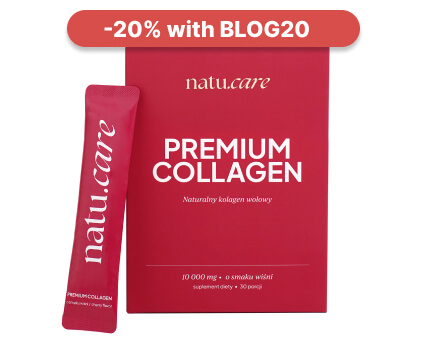
- Collagen content: 10,000 mg of hydrolyzed bovine collagen
- Additional active ingredients: vitamin C, low molecular weight hyaluronic acid, glucosamine, chondroitin, extract of Indian frankincense resin (boswellia serrata)
- Form: powder sachets for drinking
- Serving: 1 sachet per day
- Lasts for: 30 days
Product description
One of the strongest collagens on the market, providing as much as 10,000 mg per daily serving. This product can effectively support the condition of joints, skin, hair, and nails.
With this supplement, you will support your skeletal and joint system as well as your beauty, helping you visually halt the aging process and feel rejuvenated!
Pros and cons
Pros:
- The daily portion of collagen is very large – as much as 10,000 mg.
- Proven collagen formula – COLLinstant, whose effectiveness has been confirmed in clinical studies.
- Effective dose of hyaluronic acid, which additionally moisturizes the skin and positively affects joint health.
- Vitamin C supports the body's natural collagen production.
- Glucosamine is a fundamental building block of compounds found in joint cartilage and a component of collagen that gives elasticity to connective tissue in tendons.
- Chondroitin is a natural component found in the human body, mainly in cartilage. This large molecule (mucopolysaccharide) has the ability to absorb water, which helps maintain the elasticity and resilience of cartilage.
- Frankincense resin extract supports blood circulation and joint mobility and reduces their stiffness. It may help alleviate inflammatory conditions.
- The composition has been tested by the independent and accredited J.S. Hamilton laboratory.
Cons:
- None.
Additional information
Users praise Natu.Care Collagen Premium for the easy dissolving of the powder.
Premium Sodium Butyrate
Product description
Premium Sodium Butyrate is a natural support for your digestive system. With a high dose of butyric acid (940 mg), it supports the regeneration of the intestinal mucosa, improving gut health and function, and aids in the absorption of nutrients. By taking care of your intestines, you're taking care of the health of your entire body.
Studies involving people suffering from irritable bowel syndrome confirm that sodium butyrate is ideal for supporting issues related to bacterial flora imbalances (for example, after antibiotic therapy), constipation and diarrhea, inflammation of the intestinal mucosa, or a diet low in fiber.
Premium Sodium Butyrate capsules are made using the innovative DRcaps® technology. This guarantees that the active ingredients in the product are protected from the destructive effects of stomach acids and digestive enzymes. As a result, we can be sure that the beneficial ingredients are released in the small intestine and are fully absorbed by our body.
Premium Sodium Butyrate from Natu Care is 100% tested, and its composition contains only the highest quality raw materials.
Pros and cons
Pros:
- Supports digestive system function
- Helpful for various gastrointestinal conditions, including IBS
- High dose of butyric acid in each capsule
- Eco-friendly, clean, and tested composition
- Free from added sugar, gluten, GMOs, and lactose
- Innovative capsule technology - DRcaps
Cons:
- None
Additional Information
Take 3 capsules daily at any time of the day, preferably with a meal. Swallow the capsules whole with water.
Premium Sodium Butyrate is intended for adults.
The product should be used under medical supervision.
User review
I've been using the product for 2 weeks. My stomach feels lighter, and my digestion has improved. I recommend it.
Natu.Care Premium Magnesium + Vitamin B6
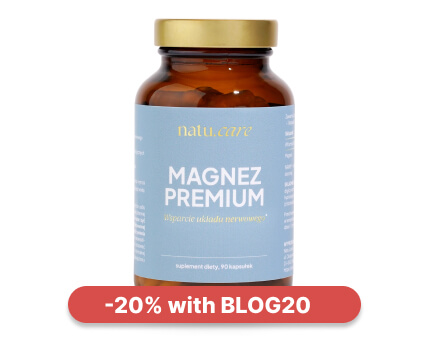
- Magnesium content per day: 305 mg
- Additional active ingredients: Vitamin B6 (2.1 mg)
- Form: capsules
- Serving size: 3 capsules per day
- Sufficient for: 30 days
Product description
The Premium Magnesium + Vitamin B6 dietary supplement is a comprehensive product that combines three organic forms of magnesium (citrate, malate, and diglycinate) and vitamin B6 in highly absorbable forms.
Magnesium is an essential mineral without which our bodies cannot function properly. It supports the immune, nervous, and muscular systems, maintains electrolyte balance, and is involved in cell division and the regulation of mental functions.
Research shows that magnesium supplementation is even more effective when accompanied by vitamin B6, which is included in our product. Vitamin B6 is responsible for the proper functioning of the nervous and immune systems, as well as the proper functioning of the heart.
If you want to safely get rid of feelings of fatigue, concentration problems, hair loss, muscle cramps, trembling, or irritability, reach for Premium Magnesium from Natu.Care, tested by the independent, certified laboratory J.S. Hamilton Poland.
Pros and cons
Pros
- Supports the proper functioning of the nervous and immune systems.
- Reduces feelings of fatigue and tiredness.
- Maintains proper psychological functions.
- The purity of the ingredients (free from anti-caking agents, artificial fillers, and additives such as titanium dioxide, microcrystalline cellulose, talc, magnesium stearate, and silicon dioxide) has been confirmed by laboratory tests.
- High absorption of ingredients.
- Soft capsules that are easy to swallow.
- Suitable for vegetarians and vegans.
Cons
- None.
Additional information
Take with a meal, 3 capsules per day.
The capsules should be taken with at least 250 ml of water.
If you have trouble sleeping, it is advisable to take 1 capsule in the morning and 2 capsules in the evening, no later than 4 hours before bedtime.
Avoid combining with products high in calcium (milk, yogurt, cheese), as this may negatively affect magnesium absorption.
Pregnant and breastfeeding women should consult a doctor before starting supplementation.
User review
I’m very impressed with the speed of delivery. The product itself is of high quality and absorbs well. After two weeks of supplementation, I’ve noticed a significant improvement in muscle recovery, especially during periods of intense training. I highly recommend it!
Product description
The dietary supplement contains omega-3ᵀᴳ, or omega-3 acids in the form of trójglyceridesów. Scientific studies suggest that this form of fatty acidsós up to 2 times better absorbed than the estersós present in many dietary supplements on the market. This means that you are assured of their effectiveness and of supplying yourself with valuable omega acids.
Fatty acids omega-3 are derived from wild anchovy oil. It is a rich source of healthy fats that are essential for the health of the cardiovascular, immune and nervous systems, as well as the proper function of vision, joints muscles.
Scientific research suggests that wild anchovies are a good source of healthy fats.
Scientific research also suggests that an adequate intake of omega-3 fatty acidsós protects against and supports the treatment of depression and anxiety disorders. In addition, omega-3s influence the hydration and appearance of the skinóry and support healthy sleep.
.
The formula contains a total of 750 mg of EPA+DHA acidsós, which is three times higher than the recommended minimum of 250 mg for the Polish population. Omega-3 TG Premium has studies indicating that its TOTOX is 9, which is a very good result.
Supplementation of omega-3 fatty acidsóis recommended for anyone who does not eat 1–2 portions (approximately 300 g) of oily fish per week. Children during growth, seniors, physically active people, vegans and vegetarians, as well as patients undergoing cardiovascular treatment and prevention of heart disease also have an increased need.
Pros and cons
The dietary supplement contains omega-3ᵀᴳ, or omega-3 acids in the form of trójglyceridesów. Scientific studies suggest that this form of fatty acidsós up to 2 times better absorbed than the estersós present in many dietary supplements on the market. This means that you are assured of their effectiveness and of supplying yourself with valuable omega acids.
Fatty acids omega-3 are derived from wild anchovy oil. It is a rich source of healthy fats that are essential for the health of the cardiovascular, immune and nervous systems, as well as the proper function of vision, joints muscles.
Scientific research suggests that wild anchovies are a good source of healthy fats.
Scientific research also suggests that an adequate intake of omega-3 fatty acidsós protects against and supports the treatment of depression and anxiety disorders. In addition, omega-3s influence the hydration and appearance of the skinóry and support healthy sleep.
.
The formula contains a total of 750 mg of EPA+DHA acidsós, which is three times higher than the recommended minimum of 250 mg for the Polish population. Omega-3 TG Premium has studies indicating that its TOTOX is 9, which is a very good result.
Supplementation of omega-3 fatty acidsóis recommended for anyone who does not eat 1–2 portions (approximately 300 g) of oily fish per week. Children during growth, seniors, physically active people, vegans and vegetarians, as well as patients undergoing cardiovascular treatment and prevention of heart disease also have an increased need.
Additional information
The dietary supplement contains omega-3ᵀᴳ, or omega-3 acids in the form of trójglyceridesów. Scientific studies suggest that this form of fatty acidsós up to 2 times better absorbed than the estersós present in many dietary supplements on the market. This means that you are assured of their effectiveness and of supplying yourself with valuable omega acids.
Fatty acids omega-3 are derived from wild anchovy oil. It is a rich source of healthy fats that are essential for the health of the cardiovascular, immune and nervous systems, as well as the proper function of vision, joints muscles.
Scientific research suggests that wild anchovies are a good source of healthy fats.
Scientific research also suggests that an adequate intake of omega-3 fatty acidsós protects against and supports the treatment of depression and anxiety disorders. In addition, omega-3s influence the hydration and appearance of the skinóry and support healthy sleep.
.
The formula contains a total of 750 mg of EPA+DHA acidsós, which is three times higher than the recommended minimum of 250 mg for the Polish population. Omega-3 TG Premium has studies indicating that its TOTOX is 9, which is a very good result.
Supplementation of omega-3 fatty acidsóis recommended for anyone who does not eat 1–2 portions (approximately 300 g) of oily fish per week. Children during growth, seniors, physically active people, vegans and vegetarians, as well as patients undergoing cardiovascular treatment and prevention of heart disease also have an increased need.
Expert opinion
The dietary supplement contains omega-3ᵀᴳ, or omega-3 acids in the form of trójglyceridesów. Scientific studies suggest that this form of fatty acidsós up to 2 times better absorbed than the estersós present in many dietary supplements on the market. This means that you are assured of their effectiveness and of supplying yourself with valuable omega acids.
Fatty acids omega-3 are derived from wild anchovy oil. It is a rich source of healthy fats that are essential for the health of the cardiovascular, immune and nervous systems, as well as the proper function of vision, joints muscles.
Scientific research suggests that wild anchovies are a good source of healthy fats.
Scientific research also suggests that an adequate intake of omega-3 fatty acidsós protects against and supports the treatment of depression and anxiety disorders. In addition, omega-3s influence the hydration and appearance of the skinóry and support healthy sleep.
.
The formula contains a total of 750 mg of EPA+DHA acidsós, which is three times higher than the recommended minimum of 250 mg for the Polish population. Omega-3 TG Premium has studies indicating that its TOTOX is 9, which is a very good result.
Supplementation of omega-3 fatty acidsóis recommended for anyone who does not eat 1–2 portions (approximately 300 g) of oily fish per week. Children during growth, seniors, physically active people, vegans and vegetarians, as well as patients undergoing cardiovascular treatment and prevention of heart disease also have an increased need.
Natu.Care Vitamin D 2000 UI
Product description
Vitamin D plays a crucial role in our health and well-being. It affects calcium and phosphate metabolism, which translates to healthy bones and teeth. It also helps regulate the immune system, and studies indicate its influence on the functioning of the nervous system.
Vitamin D, although called a “vitamin,” is actually a prohormone that our body produces on its own, primarily under the influence of sunlight. Unfortunately, our modern lifestyle contributes to deficiencies of this essential vitamin. Working in enclosed office buildings, using (necessary!) SPF creams, and covering the body with clothing all make it very difficult, if not impossible, to obtain adequate levels of vitamin D from sunlight. This is why appropriate, year-round supplementation is so crucial.
Vitamin D from Natu.Care is a well-tested vitamin D3 suspended in safflower oil, a plant known for its numerous health benefits. The convenient, easy-to-swallow capsule will make supplementation a part of your daily, healthy routine, improving your overall well-being.
Pros and cons
Pros:
- Ensures proper functioning of the immune system
- Supports the maintenance of healthy bones and teeth
- Maintains proper heart, kidney, and muscle function
- Tested by an independent, certified laboratory
- Convenient and easy-to-swallow capsule
- Clean composition - free from added sugar, gluten, GMOs, lactose, and without preservatives or colorants
Cons:
- None.
Additional Information
Pregnant women and breastfeeding mothers should consult a doctor before using the product. This dietary supplement is intended for a healthy adult population up to the age of 75.
Collagen Booster - Glow Stories

- Active ingredients: bamboo shoot extract, Quatrefolic®, L-Methionine, L-cysteine, vitamin E, vitamin A, niacin (vitamin B3), vitamin B6, vitamin B2 (riboflavin), biotin, zinc, copper
- .
- Form: capsules
- .
- Dose: 1 capsule per day
- .
- Sufficient for: 60 days
- .
Product description
A dietary supplement containing vitamins, minerals and plant extracts thatósupport the skinóhand, hair and nails. The product is especially distinguished by the form of folate – it is Quatrefolic, whichós absorbed very well and is natural.
In addition to valuable vitamins and minerals, such as vitamin A, E, B3, B2 and biotin, the formula contains bamboo shoot extract, whichóry further enhances your beauty.
Pros and cons
A dietary supplement containing vitamins, minerals and plant extracts thatósupport the skinóhand, hair and nails. The product is especially distinguished by the form of folate – it is Quatrefolic, whichós absorbed very well and is natural.
In addition to valuable vitamins and minerals, such as vitamin A, E, B3, B2 and biotin, the formula contains bamboo shoot extract, whichóry further enhances your beauty.
Additional information
A dietary supplement containing vitamins, minerals and plant extracts thatósupport the skinóhand, hair and nails. The product is especially distinguished by the form of folate – it is Quatrefolic, whichós absorbed very well and is natural.
In addition to valuable vitamins and minerals, such as vitamin A, E, B3, B2 and biotin, the formula contains bamboo shoot extract, whichóry further enhances your beauty.
Air quality in statistics
.Nothing speaks to us more clearly and emphatically than numbers. So let's look at the scale of the problem through the prism of statistics. Spoiler: it's not cheerful. But before we jump into the world of graphs and percentages, let's take another look at the standards set by the WHO.
WHO recommendations
.In 2021, the WHO issued new recommendations for acceptable concentrations of the most harmful substances in the air. Compared to the previous document (dated 2005), for most substances the standards for their concentrations have been tightened several timesand.
The WHO gives standards for recommended concentrations in two time frames: annual and daily (except for recommendations for ozone levels).
.|
Type of pollution . |
Limit annual concentration (µg/m³) . |
Tolerable daily concentration (µg/m³) . |
|
PM2.5 . |
5 |
15 |
|
PM10 |
15 |
45 |
|
Nitrogen dioxide |
10 |
25 |
|
Sulphur dioxide |
- |
40 |
|
Carbon monoxide |
- |
4 |
Slightly different are the standards for ozone (O3) - here the recommendations for concentrations have been set for different time intervals:
- 8 hours - recommendation is 100 µg/m³, .
- the daily average of the maximum 8-hourly concentration during the 6 consecutive months with the highest ozone concentrations, referred to as the "peak season"-recommendation is 60 µg/m³, .
Air quality in Poland
.At the outset, I must mention that most of the statistical data available from the Central Statistical Office (CSO) and the General Inspectorate for Environmental Protection (GIOŚ) are for the years 2020-2021. On the GIOŚ website, we can only see the annual average distributions of pollutant concentrations for 2022 in the form of an illustrative map - these are not compiled dataand.
.I would also add that the concentration standards of individual pollutants are assessed on the basis of the Regulation of the Minister of Climate and Environment of 11 December 2020 on the assessment of levels of substances in the air . It is therefore, for obvious reasons, not aligned with the latest WHO recommendations.
This is why, despite the fact that the map of average annual concentrations on the GIOŚ website sparkles with various shades of green, confronting it with the WHO recommendations, it turns out that even in those "green" areas, standards may be exceeded two or three timesand.
.Despite the fact that the Chief Inspectorate of Environmental Protection (GIOŚ) relies on standards that are not aligned with the latest standards, in 2021 there were still exceedances of permissible concentrations of pollutants in the air in as many as 14 out of 16 provinces .
.The worst air quality was recorded in the provinces:
.- Silesian, .
- Malopolskie, .
- Łódzkie, .
The inhabitants of the following provinces have the cleanest air:
.- Pomorskie, .
- Western Pomeranian, .
Not only state institutions study air quality. Both in Poland and worldwide, there are many organisations monitoring pollution levels. One of them - IQAir - publishes a ranking of the most polluted cities in real time and historically (2017-2022). At the time of writing this article the most polluted city in Poland is Orzesze (Silesian Voivodeship) - based on the annual average PM2.5 concentrationand.

Interestingly, in IQAir's 2017-2022 comparison, Kraków was ranked 15th and Warsaw 24th .
.And yet, in the smog greys there is a glimmer of hope. According to the CSO report "Environmental Protection 2022" Poland is producing less and less pollution. The document compares emissions of health-threatening substances between 2000 and 2020. Taking into account dust, sulphur dioxide, nitrogen oxide and carbon monoxide, over two decades we have managed to reduce their annual total production by 37.7%and.
.See how many thousands of tonnes of each pollutant Poland produced in 2000 and 2020.
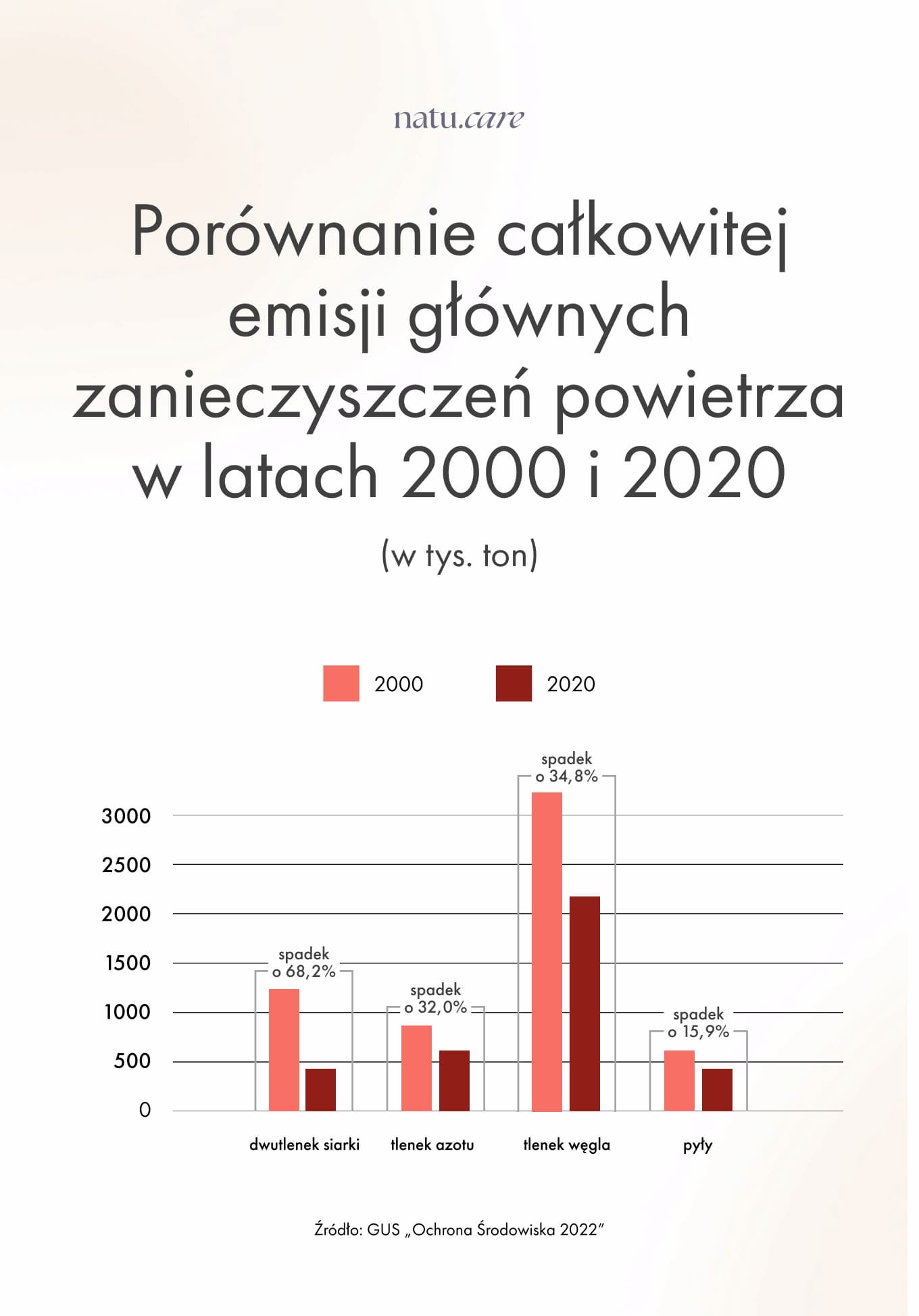
Another issue is the production of carbon dioxide, a greenhouse gas with a huge impact on climate change. In 2000, Poland emitted 317,719,000 tonnes of CO2 into the atmosphere, while in 2020 it will emit 303,523,000 tonnes. Given the pro-climate policies we should be pursuing, the decrease does not seem so impressive and is only 4.5%and.
Who poisons us the most?
.In terms of sources of air pollution emissions the CSO has distinguished the following groups :
.- energy industry, .
- industrial combustion of fuels, .
- transportation, .
- households, .
- industrial processes, .
- other sources such as agriculture, waste management or fugitive emissions. .
The Environmental Protection 2022 report examined the largest emitters of three pollutants: particulate matter, nitrogen oxides and sulphur dioxide. Thus, there are three winners in this infamous ranking: The energy industry, transport and... householdsand.
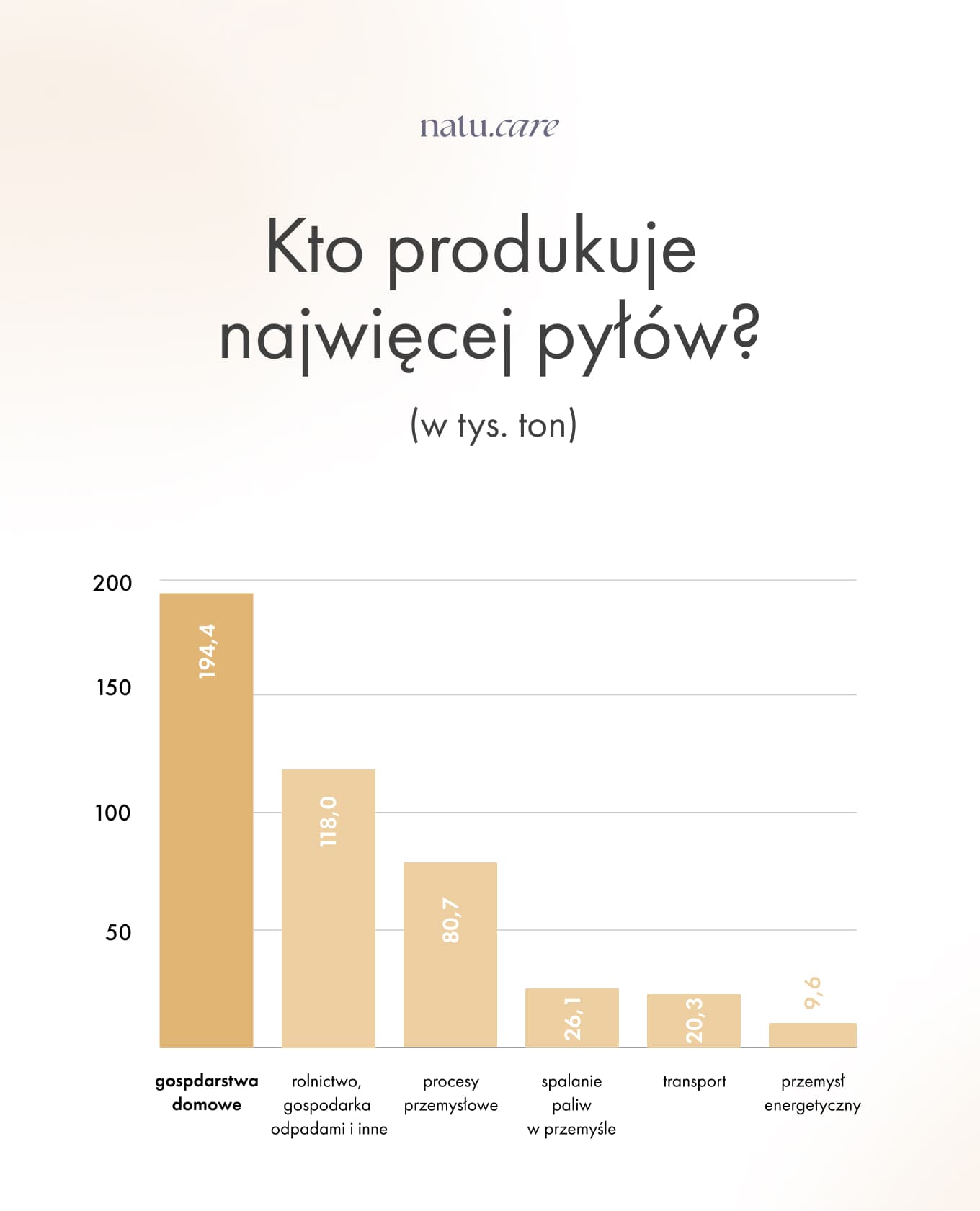
The smoke emitted from the chimneys of our homes is responsible for 43.3% of all particulate emissions in the country . In terms of the production of particularly harmful and smogogenic dust, households, heated with so-called fossils, i.e. outdated cookers into which low-quality fuel is often put, lead the way. In addition, the practice of throwing rubbish into the cookers is still alive and, appallingly, practised.
The impact of what we burn in our cookers on air quality is perfectly illustrated by the example of the so-called cracker's brew. Unfortunately, this is not a famous regional bakery product, but an area of single-family houses (villages and smaller towns with a predominance of this type of housing) located around the city of Krakow.
According to Airly, following the introduction of the solid fuel smoking ban in Krakow (as the first city in Poland), air quality in the city itself has improved. Unfortunately, it still indicated critically poor measurements in the surrounding areasand.

When it comes to transport, it is by far the winner in nitrogen oxide emissions. Indeed, it is responsible for 35.5% of the totaland.

Sulphur dioxide production, on the other hand, is the domain of the energy industry. In 2020, it emitted as much as 42.3% of this poisonous gas. However, even here, it was immediately followed by households with an equally 'impressive' figure of 29.2%and.
So who can be called the biggest polluter in Poland? Ourselves. Households emitted 29.7% of the three main air pollutants into the atmosphere, overtaking even the energy industry responsible for just over 25% of the toxins and leaving other sources .
World air quality
.The air (and, by extension, the pollutants in it) can travel vast distances. It does not care about the boundaries of cities (as the example of Krakow has shown), countries or even continents.
It is for this reason that the authorities of the world are not able to determine the quality of air.
This is why the European Union authorities look unfavourably on member states that do not meet the adopted pollution targets. And they include them in infringement procedures - against Poland such a procedure has been underway since May 2020and.
Are we the worst in Europe? According to IQAir's 'World Air Quality 2022' report, the old continent has the most pollutants in the air:
- Bosnia and Herzegovina .
- Northern Macedonia .
- Serbia
- Croatia
- Moldova
- Greece
- Italy
- Bulgaria
- Romania
- Georgia
Two important points: the report only measured PM2.5 concentrations, and I have not included countries that are only partly in Europe (e.g. Kazakhstan or Turkey) in the above comparison.
Poland is not included.
Poland may not be in the top ten, but this does not mean that we can breathe be relieved - we ranked 11th. And if only the countries belonging to the European Union were taken into account, then we would rank 6. positionand.
And what does the 10 most polluted countries in the world in 2022 look like? Here Asia and Africa lead the way:
.- Cad
- Iraq
- Pakistan
- Bahrain .
- Bangladesh .
- Burkina Faso
- Kuwait
- India
- Egypt
- Tajikistan .
Are we missing someone here...? If you're reflexively looking for China - no wonder - it's been at the top of this infamous pile for years. But since 2013, the country has introduced restrictive policies to improve air quality and has now dropped to 25th place in the ranking. Has this paid off? And how: thanks to the changes introduced over the past decade, it is estimated that the life expectancy of the population has increased by more than two years. So - it can be done.
.Pollution producers
.When talking about pollutant emissions, experts most often look at carbon dioxide, as it has a direct impact not only on health, but also on climate change. Who produces the most of it?
Most CO2 is released into the atmosphere byand:
- China
- USA
- India
- Russia
- Japan
Interestingly, if food waste were treated as a country, it would push India off the podiumand. A bit scary.
In addition to carbon dioxide, Green Peace also examined global sulphur dioxide emissions in 2018. Here are 5 countries that produced the most SO2and:
- India
- Russia
- China
- Mexico
- Iran
To paraphrase Professor McGonagall from Harry Potter: China, India and Russia - why is it that whenever pollution is mentioned, the three of you are there?
What affects air pollution?
.Looking at the problem of air pollution through the prism of the world, one of the main factors is industry. Factories, power plants, refineries - all these places emit huge amounts of pollutants such as sulphur dioxide, nitrogen oxides and particulate matter into the atmosphere. Sites burning coal and using chemicals for industrial processesand are particularly problematic.
Another major source of pollution is transport. Cars, trucks, planes, ships - all these vehicles emit exhaust fumes that contain a range of harmful compounds. Carbon dioxide is often cited as the main culprit of climate change, but exhaust also contains other pollutants such as nitrogen oxides and particulatesand.
We must also not forget about agriculture. Fertilisers, pesticides and greenhouse gases emitted by livestock, such as cows, are also an important source of air pollutionand.
A last, but not least (especially in Poland), factor is the burning of solid fuels in homes. Many people still use low-quality coal or wood to heat their homes, leading to the emission of harmful pollutants into the atmosphereand.
How to protect yourself from polluted air
.Polluted air is a problem that affects us all. However, the right action can help minimise its negative effects. Here are some proven ways to help you protect yourself from polluted air.
To know when to take the necessary action, it is worth monitoring the state of the air in your area on an ongoing basis. Various apps and websites provide information about the current air quality. Tracking this data will let you know when the air is most polluted. What to do then?
.There 10 ways to protect yourself from smog:
1. Wear an anti-smog mask
.Smog masks are not very comfortable, but they are effective. When air quality indicators are sounding the alarm and you need to go outside, they will help protect you from inhaling harmful particles. Remember to choose models that filter out the smallest PM2.5 particles.
.2. Take care of the quality of your heating systems
.If you live in a house, regularly check the condition of your heating system and ventilation. Choose good quality fuels as fuel. Remember also that a decently insulated house means lower heating costs. If your home could use some thermo-modernisation, read more about the Clean Air grant programme later in this article.
3.
3. Limit outdoor activities
.During days when pollution levels are high, it is best to limit the time you spend outside. This is especially important during intense exercise, when we naturally breathe deeper and faster.
4.
4. Use an air purifier
.Air purifiers can help keep the air in your home clean. Choose units with HEPA filters, which are able to catch the finest particles of pollutants.
5. Humidify the air
.Keeping the air in your home sufficiently humid makes pollutants (especially dust) fall to the ground faster. It is then easier to clean them up - just mop the floor wet.
6.
6. Let some greenery into your home
.Some houseplants have the ability to clean the air naturally. Flowers such as Dutch fern, orchid, sansevieria and aloe vera can help remove harmful substances from the air.
6.
7. How about a tram...?
.Using public transport is one way to help improve the air in your area. You can also cover shorter distances by bicycle. It will be both environmentally friendly and good for your health.
8.
8. Vote in the civic budget
.The last parliamentary elections showed that your vote matters. Vote in the civic budget for tree planting and green space protection initiatives in your city.
9.
9. Segregate your waste
.Segregating your rubbish not only contributes to making landfill heaps smaller. By doing so, you are also protecting the air.
10.
10. buy consciously
.Thousands of tonnes of waste end up in landfills, and there ... emitting greenhouse gases. What's more, most of this stuff is usable. Clothing brands operating in the spirit of fast fashion are a good example of this problem.
Every year they produce tons of clothes to keep up with the latest trends and throw away the surplus produced. Yes, that's right - they throw away new clothes that haven't sold. And all the pollution put into the atmosphere, used in their production, goes to waste.
It is worth choosing brands (not just clothing brands) that feature more sustainable production and, for example, have implemented a CO2 reduction policy. Protecting against polluted air is a process that requires regular action. By taking care of your air quality, you take care of your health.
Clean Air Programme
.Burning rubbish, old, inefficient cookers and poorly insulated houses (which thus require stronger heating). If it were not for these things in Poland, we would breathe much more freely during the autumn and winter seasons. Can anything at all be done about the problem of throat-biting smoke from the neighbour's chimney?
One answer to this question is the Clean Air Programme. This programme is a government initiative that aims to improve air quality throughout the country. It is aimed at owners of detached houses and offers funding to replace old, inefficient heating systems with new, greener solutions .
The principles of the scheme are simple. Homeowners who wish to take advantage of the funding should submit an application. This application must include information about the house, the heating system they wish to replace and the one they wish to install. The application is also accompanied by documents proving ownership of the homeand.
The amount of the subsidy depends on several factors. First of all, the greener the new heating system is, the higher the grant you can receive. In addition, the subsidy is higher for people who have lower incomes. The maximum amount of funding is 90% of the investment costsand.
.When an application is submitted, it is assessed by specialists. If the application complies with the requirements of the programme, the applicant gets a decision on the grant. Once the decision is received, the homeowner can proceed with the investment. Once the work is completed, documents must be submitted to prove that the work has been carried out, and then the grant is receivedand.
.It is important that the Clean Air programme not only helps to improve air quality, but also saves on heating costs. New, more efficient heating systems use less energy, which translates into lower heating bills. This makes the investment in thermal modernisation pay off quicklyand.
In addition, the programme not only allows for the replacement of the cooker, but can also cover the insulation of the house.
.Clean Air Day at nursery and school
.In order to start taking action, it is first necessary to understand the problem at hand. Alongside topics such as healthy lifestyles, diet and the environment, air quality issues are things you should be familiar with from a very young age.
Check out if you can't take action.
Check if your child's nursery or school has a Clean Air Day. If not, nothing lost - you can play teacher yourself if you feel like it. The whole package of educational material, along with simple experiments, is available at Eccalendar ← a click will take you straight to the pdf file.
Summary
.- The most dangerous air pollutants are particulate matter (PM2.5 and PM10), carbon monoxide, sulphur dioxide and nitrogen oxides. .
- Poland is among the countries with the worst air quality in the European Union. .
- Nearly one-third of air pollution in Poland is produced by households using outdated heating systems. .
- The world's top polluting countries are China, India and Russia.
- The world's top polluting countries are China, India and Russia.
- Although it is impossible to escape polluted air, you can reduce its harmful effects on your health. Avoid playing sports outdoors during periods of poor air quality, use air purifiers and grow lots of plants.
- To reduce the cost of thermo-modernisation of your home, take advantage of the Clean Air Programme. You will do something good not only for you and your family, but also for your neighbours. .
FAQ
.How to care for clean air
.Care for clean air by reducing emissions. Avoid burning wood in fireplaces and cookers, which emit high levels of harmful particulates. Use renewable energy instead of fossil fuels. Carry out regular car maintenance and servicing to minimise emissions.
.Change modes of transport. Choose cycling, public transport or walking instead of a car. This works on two fronts: it reduces emissions and improves your fitness.
Replace your car.
Plant trees and plants. Trees absorb carbon dioxide and emit oxygen, while houseplants can improve indoor air quality.
Educate others.
Educate others about the importance of clean air and encourage them to take appropriate steps. All of these actions are aimed at reducing air pollution, which has a direct impact on our health.
How many times can you benefit from the Clean Air Programme?
.You can only benefit from the Clean Air Programme once per property. The scheme is dedicated to improving energy efficiency and reducing emissions from residential buildings.
For example, if you decide to replace your old cooker with a new, environmentally friendly one, you will not be able to reapply for a grant for the same property, for example to insulate your building. It is therefore important to plan exactly what you want to spend the programme funds on. Choose those measures that will bring the greatest benefit to your home and the environment. This will allow you to make the most of the funding available.
What is polluting the air in your home?
.Home air pollution can come from many sources. Avoid smoking indoors as tobacco smoke contains harmful substances. Use hoods when cooking to minimise the emission of fumes, e.g. from frying. Regularly ventilate rooms to change the air.
.Maintain cleanliness, vacuum and mop floors to reduce dust and allergens. Avoid chemicals with volatile organic compounds (VOCs) - choose natural cleaning products.
Maintain cleanliness.
Check and maintain heating and air conditioning systems to prevent the growth of mould and bacteria. For example, a dirty air conditioner can become a source of contamination. All of this is important to maintain clean air in the home and promote health.
What can be done to avoid air pollution?
Reducing air pollution is a task for all of us. Here are some concrete actions:
Use public transport, cycle or walk. This reduces emissions. It is estimated that if 1,000 people gave up their car in favour of a bicycle, this could reduce CO2 emissions by around 1,500 tonnes per year.
Reduce the amount of CO2 emitted by walking.
Reduce energy consumption. Turn off lights when they are not needed, use energy-efficient appliances. Every 1 kWh of energy saved is about 0.5 kg less CO2 in the atmosphere.
Segregate your waste.
Segregate waste. Recycling paper, plastic or glass reduces the need to produce new materials, resulting in fewer emissions.
Segregate waste.
If you have a garden - plant trees in it. They absorb carbon dioxide - an average-sized tree can absorb up to 21 kg of CO2 per year.
Educate others.
Educate others. Share your knowledge of air pollution and ways to reduce it. Each of these actions has a direct impact on the quality of the air we breathe.
Educate others.
What is poisoning our air?
.The air is poisoned by various factors. The main ones are car exhaust fumes, industrial emissions, smoking in cookers and fireplaces, but also allergens: pollen and animal epidermis (it's not the dander that makes you allergic, it's the fragments of epidermis and secretions such as saliva).
Resist from driving.
Avoid driving. Where possible, use public transport, cycle or walk. This will reduce emissions.
Invest in green energy sources, such as solar panels, to heat your home. Avoid burning wood or coal, which generate large amounts of harmful particulates.
Maintain a clean home.
Maintain cleanliness in the areas where you live and work. Clean and vacuum regularly to minimise the amount of allergens in the air.
Maintain a clean environment in which you live and work.
Each of these actions has a direct impact on the air we breathe. Improving its quality contributes to everyone's health and well-being.
Improving its quality contributes to everyone's health and well-being.
What produces the most pollution?
.In Poland, households produce the most pollution (especially during the autumn and winter seasons). They produce the most particulate matter. Transport, on the other hand, is responsible for most nitrogen oxide pollution. The energy industry is king in the production of toxic sulphur dioxide.
.Does rain clean the air?
.Yes, rain has the ability to purify the air. When it rains, the water droplets absorb and flush away pollutants such as dust, soot, pollen and particles. Take advantage of this fact to improve the air quality in your home by opening your windows after rainfall, when pollution levels are lower.
However, rain does not remove all pollutants. Some gases, such as carbon monoxide and nitrogen oxides, can dissolve in water to form acid rain, which is harmful to the environment. Therefore, monitor your air quality with local measuring stations, especially on rainy days.
Remember also that heavy rainfall can bring more harmful particles from the higher layers of the atmosphere. Therefore, rain does not always guarantee clean air.
Please be aware of this.
Sources
.See all
.7 September marks International Clean Air Day, established by the United Nations. This is a good opportunity to look at the actions taken by Poland to fight for blue skies. - Clean Air Programme. (n.d.). Retrieved 29 October 2023, from https://czystepowietrze.gov.pl/7-wrzesnia-obchodzimy-miedzynarodowy-dzien-czystego-powietrza-ustanowiony-przez-onz-to-dobra-okazja-by-przyjrzec-sie-dzialaniom-podejmowanym-przez-polske-na-rzecz-walki-o-blekitne-niebo/
Carbon monitor. (n.d.). Retrieved 29 October 2023, from https://carbonmonitor.org/
Clean Air Day- 14 November. (n.d.). Voivodeship Fund for Environmental Protection and Water Management in Warsaw. Retrieved 29 October 2023, from https://wfosigw.pl/dzien-czystego-powietrza-14-listopada/
Where is the most smog in Poland? Read Airly's analysis - Airly WP | Air Quality Monitoring in Poland and around the world. Try the Airly platform and air quality sensors. (n.d.). Retrieved 29 October 2023, from https://airly.org/pl/gdzie-jest-najwiecej-smogu-w-polsce-przeczytaj-analize-airly/
GUS. (n.d.). Environment 2022. stat.gov.pl. Retrieved 29 October 2023, from https://stat.gov.pl/obszary-tematyczne/srodowisko-energia/srodowisko/ochrona-srodowiska-2022,1,23.html
Communication of the GIOŚ dated 03.03.2023. On the current and projected air quality in Poland-GIOŚ. (n.d.). Retrieved 29 October 2023, from https://powietrze.gios.gov.pl/pjp/content/show/1004443
International Clean Air Day - Clean Air Programme. (n.d.). Retrieved 29 October 2023, from https://czystepowietrze.gov.pl/miedzynarodowy-dzien-czystego-powietrza/
Most dangerous types of air pollution-Airly WP | Air Quality Monitoring in Poland and around the world. Try the Airly platform and air quality sensors. (n.d.). Retrieved 29 October 2023, from https://airly.org/pl/najbardziej-niebezpieczne-rodzaje-zanieczyszczen-powietrza/
World's most polluted cities in 2022-Ranking of PM2.5 | IQAir. (n.d.-a). Retrieved 29 October 2023, from https://www.iqair.com/pl/world-most-polluted-cities
Air Quality Assessment-Pollutant Concentration Schedules-GIOŚ. (n.d.). Retrieved 29 October 2023, from https://powietrze.gios.gov.pl/pjp/maps/modeling
EEC infringement procedure on air quality in Poland. (n.d.). Now-Środowisko. Retrieved 29 October 2023, from https://www.teraz-srodowisko.pl/aktualnosci/komisja-europejska-tsue-jakosc-powietrza-bialowieza-9951.html
project, T. W. A. Q. I. (n.d.). Top 10 countries with the worst air pollution index. aqicn.org. Retrieved 29 October 2023, from https://aqicn.org/rankings/pl/
Regulation of the Minister of Climate and Environment of 11 December 2020. On the assessment of levels of substances in the air. (n.d.). Downloaded 29 October 2023, from https://isap.sejm.gov.pl/isap.nsf/DocDetails.xsp?id=WDU20200002279
WHO global air quality guidelines: Particulate matter (PM2.5 and PM10), ozone, nitrogen dioxide, sulfur dioxide and carbon monoxide. (n.d.). Retrieved 29 October 2023, from https://www.who.int/publications-detail-redirect/9789240034228
WHO recommends stricter air quality standards. (n.d.). Now-Environment. Retrieved 29 October 2023, from https://www.teraz-srodowisko.pl/aktualnosci/who-wytyczne-jakosc-powietrza-10861.html
Ecalendar World Clean Air Day https://www.ekokalendarz.pl/wp-content/uploads/Dzie%C5%84-Czystego-Powietrza.pdf
HEAD INSPECTORATE FOR ENVIRONMENTAL PROTECTION Assessment of air quality in zones in Poland for the year 2021
.2022 World Air Quality Report Region & City PM2.5 Ranking https://www.greenpeace.org/static/planet4-india-stateless/2023/03/2fe33d7a-2022-world-air-quality-report.pdf
Global SO2 emission hotspot database RANKING THE WORLD'S WORST SOURCES OF SO2 POLLUTION https://www.greenpeace.org/static/planet4-international-stateless/2019/08/e40af3dd-global-hotspot-and-emission-sources-for-so2_16_august-2019.pdf
Editorials
Meet the team

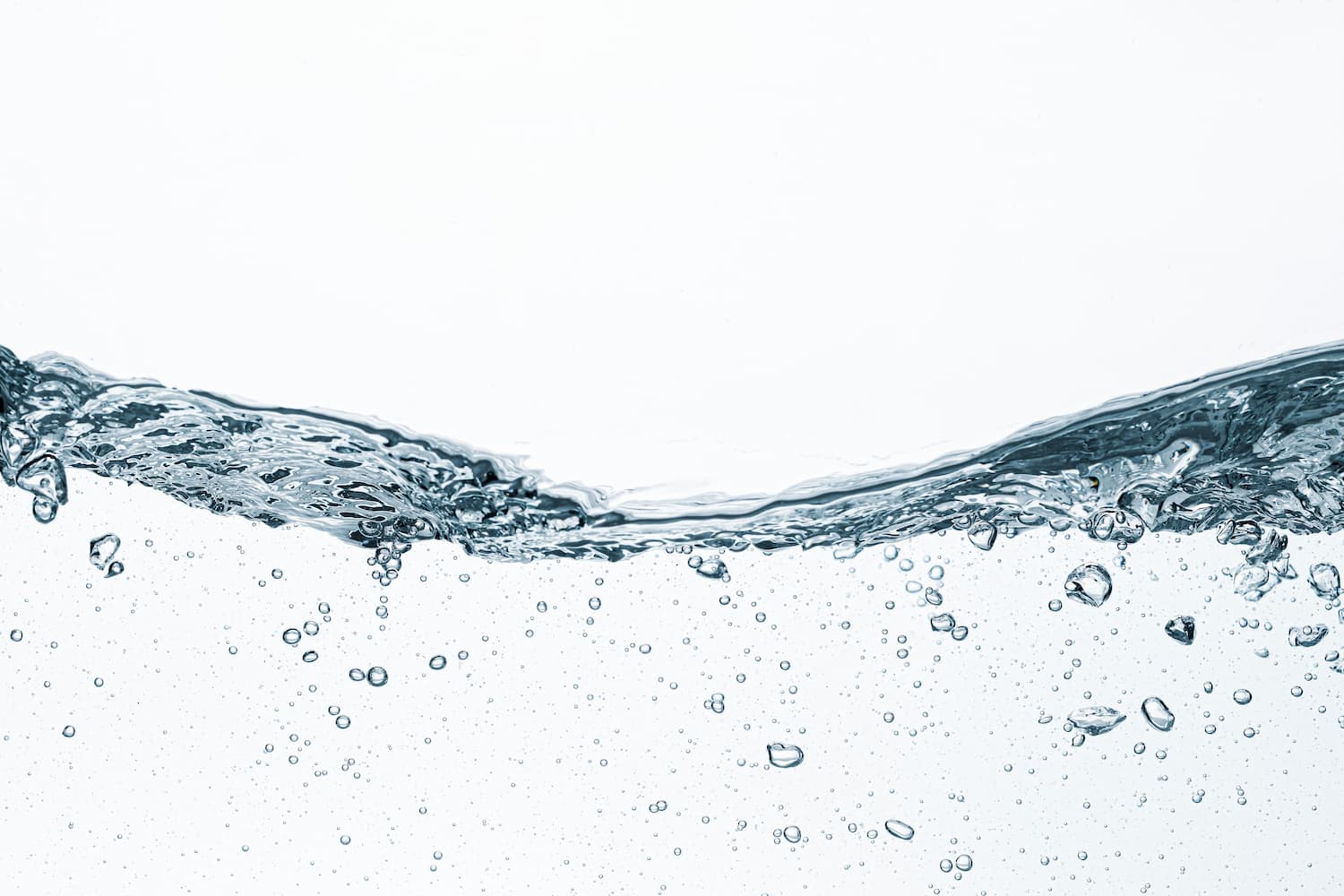
World Water Day aims to raise awareness of the lack of drinking water in many regions of the world.
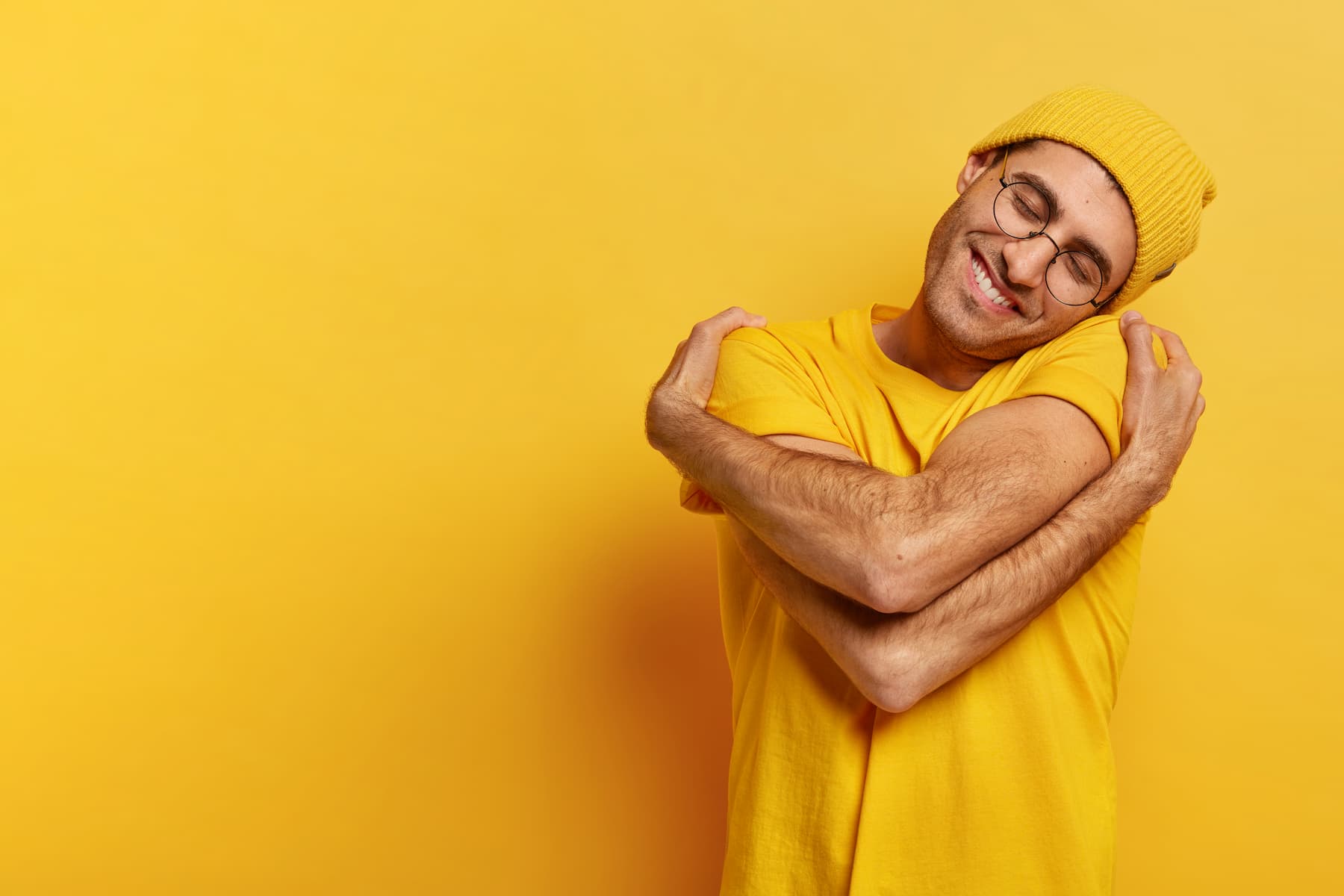
How many Poles are single and why have they chosen to live alone?
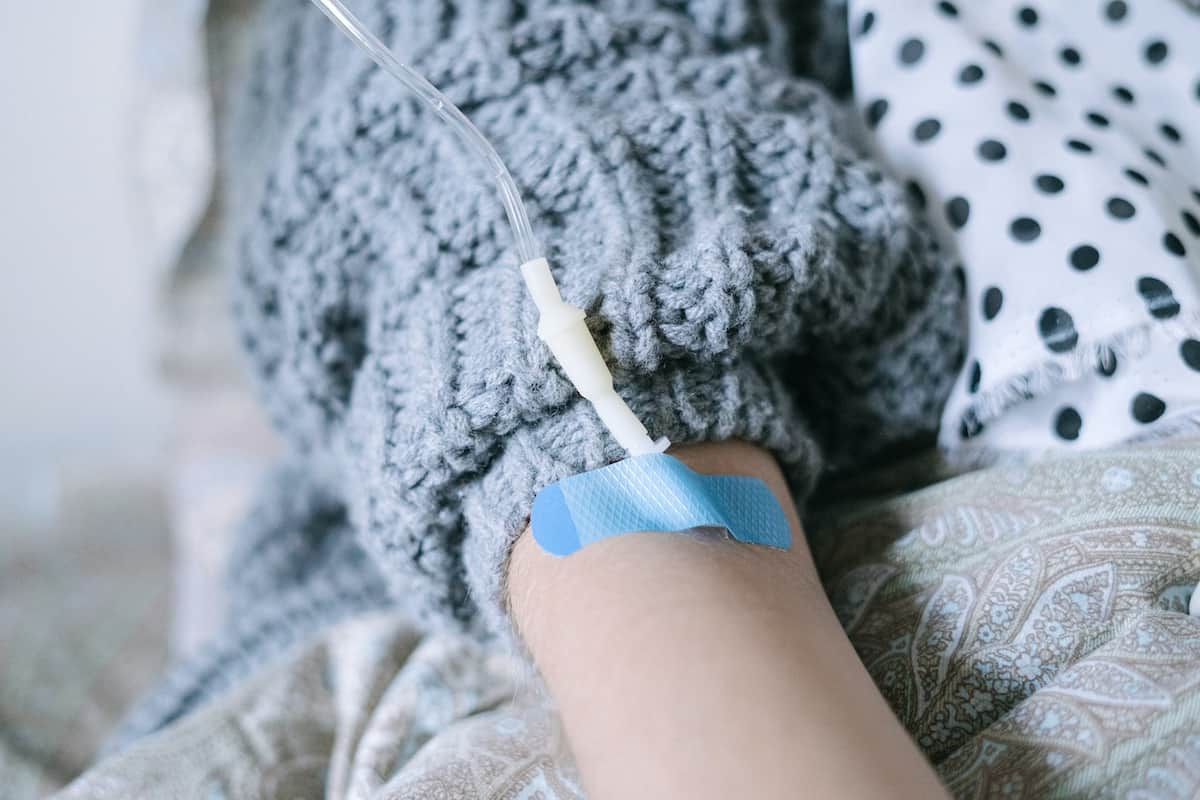
World Cancer Day encourages research and healthy lifestyles.



